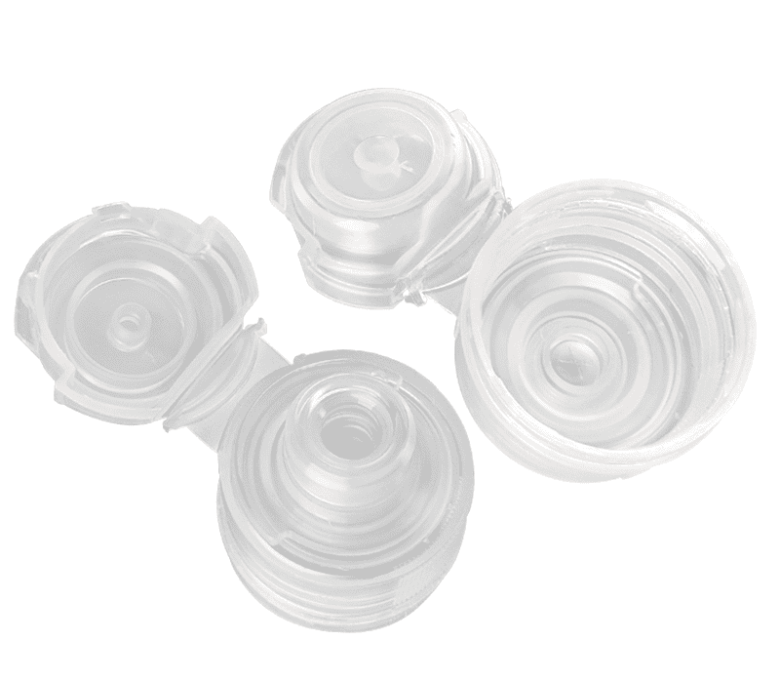

أغطية زجاجات المياه: إعادة الاستخدام مقابل الاستخدام الفردي - أيهما أفضل للبيئة؟
أصبح التأثير البيئي للتغليف موضوعًا ساخنًا في السنوات الأخيرة، ولسبب وجيه. من النفايات البلاستيكية المتراكمة في محيطاتنا إلى الطلب المتزايد على الحلول المستدامة، من الضروري تقييم بدائل التغليف الأفضل حقًا لكوكب الأرض. في هذا المقال، نتعمق في دراسة أجرتها منظمة التعاون الاسكندنافي التي تبحث في العبوات ذات الاستخدام الواحد مقابل البدائل القابلة لإعادة الاستخدام، ونستكشف كيف ينطبق هذا النقاش على أغطية زجاجات المياه ومكونات التغليف الأخرى. دعونا ننظر إلى جانبي العملة ونحدد ما هو الأفضل للبيئة.
بدائل قابلة لإعادة الاستخدام: صديقة للبيئة، ولكن ما مدى عمليتها؟
والآن، دعونا نقلب النص. البدائل القابلة لإعادة الاستخدام، مثل غطاء علوي قلاب 28 مم أو تامبا فليب توب، تقدم حلاً واعداً للحد من النفايات. وتسلط الدراسة الضوء على حاويات الوجبات الجاهزة القابلة لإعادة الاستخدام المصنوعة من البولي بروبلين، والتي يمكن أن تتحمل استخدامات متعددة - حتى 10 مرات في الواقع - قبل أن تحتاج إلى استبدالها. وهذا يجعل من أغطية زجاجات المياه القابلة لإعادة الاستخدام خياراً جذاباً لتحقيق الاستدامة وتوفير التكاليف على المدى الطويل.
في حالة عبوات التجارة الإلكترونية، توفر مادة البولي بروبيلين المنسوجة القابلة لإعادة الاستخدام فوائد كبيرة، حيث يمكن استخدام المواد عدة مرات (حتى أربع مرات). من خلال اختيار خيارات التعبئة والتغليف القابلة لإعادة الاستخدام، بما في ذلك الأغطية العلوية القابلة للقلب للزجاجات، يمكن للشركات أن تخفض بشكل كبير من إنتاجها من النفايات وتقلل من كمية البلاستيك المتداولة.
العبوات أحادية الاستخدام: الراحة مقابل الاستدامة
غالبًا ما يُنظر إلى العبوات ذات الاستخدام الواحد، بما في ذلك عناصر مثل حاويات الوجبات الجاهزة التي تستخدم لمرة واحدة أو عبوات التجارة الإلكترونية، على أنها أكثر ملاءمة. فهي سهلة وميسرة ومصممة للاستخدام لمرة واحدة. أغطية زجاجات المياهمثل غطاء علوي قلاب 28 ممتندرج ضمن هذه الفئة. تُصنع العديد من هذه الأغطية من البولي إيثيلين منخفض الكثافة (LDPE) أو البولي بروبيلين، وهي مواد خفيفة الوزن وغير مكلفة.
ومع ذلك، فإن الجانب السلبي لهذه المواد هو أثرها البيئي. ففي الدراسة التي أجراها الاتحاد التعاوني لبلدان الشمال الأوروبي، وجدوا أن العبوات ذات الاستخدام الواحد، مثل حاوية الوجبات الجاهزة ذات الاستخدام الواحد التي تزن 59 جرامًا، غالبًا ما تستخدم البلاستيك البكر. ويعني ذلك أن الطاقة والمواد الخام المستخدمة في إنتاجها هي طريق ذو اتجاه واحد، وبمجرد التخلص من السلعة لا يعاد استخدامها. ينتهي المطاف بالأغطية ذات الاستخدام الواحد للزجاجات - سواء كانت أغطية علوية أو أغطية صرف - في مدافن النفايات أو المحيط، حيث تساهم في التلوث.
ولكن ما مدى سوء الأمر؟ قد تبدو البصمة الكربونية لأغطية زجاجات المياه ذات الاستخدام الواحد صغيرة على أساس فردي، ولكن عندما تتضاعف عبر مليارات الوحدات في جميع أنحاء العالم، فإنها تتراكم بسرعة. ومع أغطية زجاجات المياه المصممة للاستخدام لمرة واحدة، فإن التكلفة البيئية فورية وطويلة الأمد.
ماذا يعني ذلك بالنسبة لأغطية زجاجات المياه؟ قابلة لإعادة الاستخدام أغطية الزجاجات العلوية القلابةمثل الغطاء القلاب مقاس 28 مم، يساهم في الاقتصاد الدائري حيث يتم إعادة استخدام المواد بدلاً من التخلص منها بعد استخدام واحد. ومن خلال تشجيع العملاء على اختيار الحلول القابلة لإعادة الاستخدام، فإننا نقلل من الطلب على البلاستيك الجديد ونحد من الضرر البيئي على المدى الطويل.
مقارنة الأثر البيئي
دعونا نلقي نظرة على الأرقام. وفقًا للدراسة التي أجراها الاتحاد التعاوني لبلدان الشمال الأوروبي، فإن التأثير البيئي للتغليف القابل لإعادة الاستخدام أقل بشكل ملحوظ من البدائل ذات الاستخدام الواحد. على سبيل المثال
حاوية الوجبات الجاهزة القابلة لإعادة الاستخدام:: 226 غ من البولي بروبلين، استُخدم 10 مرات.
حاوية الوجبات الجاهزة أحادية الاستخدام: 59 جرام بولي بروبيلين، استُخدم مرة واحدة.
على الرغم من أن الحاوية القابلة لإعادة الاستخدام قد تزن أكثر في البداية، إلا أن عمرها الافتراضي الطويل يقلل من التكلفة البيئية الإجمالية. وينطبق المبدأ نفسه على أغطية زجاجات المياه - الأغطية القابلة لإعادة الاستخدام القابلة للقلب هي الخيار الأفضل لأنه يمكن استخدامها عدة مرات، في حين يتم التخلص من الغطاء القابل للتصرف بعد استخدام واحد.
من خلال توسيع نطاق استخدام مواد مثل البولي بروبلين، يمكن للعلامات التجارية والمستهلكين تقليل النفايات البلاستيكية الإجمالية وتقليل عدد الموارد المطلوبة لتصنيع سلع جديدة. وهذا ليس مكسباً للبيئة فحسب، بل يساعد الشركات أيضاً على تحقيق أهداف الاستدامة مع تقديم حلول عملية وصديقة للعملاء.
الحلول التي تركز على العملاء: ماذا يجب أن تختار؟
إذا كنت في السوق لشراء أغطية زجاجات المياه، ففكر في نوع الغطاء التي تناسب عملك وتتماشى مع أهدافك الصديقة للبيئة. إن غطاء علوي قلاب 28 مم، على سبيل المثال، مثالية للعملاء الذين يبحثون عن الراحة وسهولة الاستخدام، مع دعم التوجه نحو الاستدامة. تُعد هذه الأغطية، عند تصميمها لإعادة الاستخدام، خيارًا رائعًا للعلامات التجارية التي تهدف إلى تقليل نفايات العبوات.
بالنسبة لأولئك الذين يهتمون بتقليل بصمتهم البيئية، فإن التحول من العبوات ذات الاستخدام الواحد إلى البدائل القابلة لإعادة الاستخدام هو حل واضح. فهو لا يساعد الكوكب فحسب، بل يمنح علامتك التجارية ميزة خضراء في سوق يتزايد فيه الوعي البيئي.
سواء كنت تستخدم أغطية علوية قابلة للقلب, تابا فليب توب 28أو غيرها من أغطية زجاجات المياه القابلة لإعادة الاستخدام، فإن اختيارك يمكن أن يؤثر بشكل كبير على البيئة. اختيار إغلاق الاستغناء عن الإغلاق أو الأغطية القلابة المصممة للاستخدام على المدى الطويل، تساعد على إغلاق حلقة النفايات وتمهد الطريق لمستقبل أنظف وأكثر اخضرارًا.
الخاتمة: ما هو الحكم؟
إذن، ما الأفضل للبيئة؟ أغطية زجاجات المياه القابلة لإعادة الاستخدام مثل غطاء علوي قلاب 28 مم وخيارات التعبئة والتغليف المستدامة الأخرى هي الرابحة بوضوح. من خلال الحد من الاعتماد على العبوات ذات الاستخدام الواحد، يمكن للعلامات التجارية والعملاء على حد سواء اتخاذ خطوات مجدية نحو الحد من النفايات البلاستيكية وحماية البيئة. ويبقى السؤال: هل أنت مستعد للتغيير؟



استجابات 2